2,9-二甲基-1,10-邻菲洛啉, 99.0%,Neocuproine hemihydrate
产品编号:西域试剂-WR369333| CAS NO:484-11-7| MDL NO:MFCD00004973| 分子式:C14H12N2| 分子量:208.26
新铜因是一种生物化学试剂,可作为生物材料或有机化合物用于生命科学相关研究。
本网站销售的所有产品仅用于工业应用或者科学研究等非医疗目的,不可用于人类或动物的临床诊断或者治疗,非药用,非食用,
| 产品名称 | 2,9-二甲基-1,10-邻菲洛啉, 99.0% | ||||||||||||||||
|---|---|---|---|---|---|---|---|---|---|---|---|---|---|---|---|---|---|
| 英文名称 | Neocuproine hemihydrate | ||||||||||||||||
| CAS编号 | 484-11-7 | ||||||||||||||||
| 产品描述 | 新铜因是一种生物化学试剂,可作为生物材料或有机化合物用于生命科学相关研究。 | ||||||||||||||||
| 产品熔点 | 159-164 °C | ||||||||||||||||
| 产品沸点 | 367.4±37.0 °C at 760 mmHg | ||||||||||||||||
| 产品密度 | 1.2±0.1 g/cm3 | ||||||||||||||||
| 产品闪点 | 159.7±17.8 °C | ||||||||||||||||
| 精确质量 | 208.100052 | ||||||||||||||||
| PSA | 25.78000 | ||||||||||||||||
| LogP | 2.70 | ||||||||||||||||
| 外观性状 | 淡黄色-灰白色晶体 | ||||||||||||||||
| 蒸气压 | 0.0±0.8 mmHg at 25°C | ||||||||||||||||
| 折射率 | 1.693 | ||||||||||||||||
| 溶解性 | slightly soluble | ||||||||||||||||
| 溶解性数据 | In Vitro:
DMSO : 50 mg/mL (240.08 mM; ultrasonic and warming and heat to 60°C) 配制储备液
*
请根据产品在不同溶剂中的溶解度选择合适的溶剂配制储备液;一旦配成溶液,请分装保存,避免反复冻融造成的产品失效。 In Vivo:
请根据您的实验动物和给药方式选择适当的溶解方案。以下溶解方案都请先按照 In Vitro 方式配制澄清的储备液,再依次添加助溶剂:
——为保证实验结果的可靠性,澄清的储备液可以根据储存条件,适当保存;体内实验的工作液,建议您现用现配,当天使用;
以下溶剂前显示的百
| ||||||||||||||||
| 稳定性 | 按规格使用和贮存,不会发生分解,避免与氧化物接触 | ||||||||||||||||
| 储存条件 | 密封保存,放置于通风、干燥地方,避免于其他氧化物接触。 |
相关文档
化学品安全说明书(MSDS)
下载MSDS质检证书(COA)
相关产品
| 符号 |

GHS07 |
|---|---|
| 信号词 | Warning |
| 危害声明 | H315-H319-H335 |
| 警示性声明 | P261-P305 + P351 + P338 |
| 个人防护装备 | dust mask type N95 (US);Eyeshields;Gloves |
| 危害码 (欧洲) | Xn:Harmful; |
| 风险声明 (欧洲) | R20/21/22;R36/37/38 |
| 安全声明 (欧洲) | S26-S36/37/39 |
| 危险品运输编码 | NONH for all modes of transport |
| WGK德国 | 3 |
| 海关编码 | 29339990 |
Synonym:Neocuproine hemihydrat Section 2 - COMPOSITION, INFORMATION ON INGREDIENTS
Risk Phrases: None Listed. Section 3 - HAZARDS IDENTIFICATION EMERGENCY OVERVIEW
Light sensitive.The toxicological properties of this material have not been fully investigated. Potential Health Effects Eye: Causes eye irritation. Skin: Causes skin irritation. Ingestion: May cause gastrointestinal irritation with nausea, vomiting and diarrhea. The toxicological properties of this substance have not been fully investigated. Inhalation: Causes respiratory tract irritation. The toxicological properties of this substance have not been fully investigated. Chronic: No information found. Section 4 - FIRST AID MEASURES Eyes: Immediately flush eyes with plenty of water for at least 15 minutes, occasionally lifting the upper and lower eyelids. Get medical aid. Skin: Immediately flush skin with plenty of water for at least 15 minutes while removing contaminated clothing and shoes. Get medical aid if irritation develops or persists. Ingestion: If victim is conscious and alert, give 2-4 cupfuls of milk or water. Never give anything by mouth to an unconscious person. Get medical aid. Inhalation: Remove from exposure and move to fresh air immediately. If not breathing, give artificial respiration. If breathing is difficult, give oxygen. Get medical aid. Notes to Physician: Section 5 - FIRE FIGHTING MEASURES General Information: As in any fire, wear a self-contained breathing apparatus in pressure-demand, MSHA/NIOSH (approved or equivalent), and full protective gear. During a fire, irritating and highly toxic gases may be generated by thermal decomposition or combustion. Extinguishing Media: Use water spray, dry chemical, carbon dioxide, or chemical foam. Section 6 - ACCIDENTAL RELEASE MEASURES General Information: Use proper personal protective equipment as indicated in Section 8. Spills/Leaks: Vacuum or sweep up material and place into a suitable disposal container. Reduce airborne dust and prevent scattering by moistening with water. Clean up spills immediately, observing precautions in the Protective Equipment section. Section 7 - HANDLING and STORAGE Handling: Wash thoroughly after handling. Wash hands before eating. Use with adequate ventilation. Avoid contact with skin and eyes. Avoid ingestion and inhalation. Store protected from light. Storage: Store in a cool, dry place. Do not store in direct sunlight. Store in a tightly closed container. Section 8 - EXPOSURE CONTROLS, PERSONAL PROTECTION Engineering Controls: Use adequate ventilation to keep airborne concentrations low. Exposure Limits CAS# 484-11-7: Personal Protective Equipment Eyes: Wear appropriate protective eyeglasses or chemical safety goggles as described by OSHA's eye and face protection regulations in 29 CFR 1910.133 or European Standard EN166. Skin: Wear appropriate gloves to prevent skin exposure. Clothing: Wear appropriate protective clothing to prevent skin exposure. Respirators: Follow the OSHA respirator regulations found in 29 CFR 1910.134 or European Standard EN 149. Use a NIOSH/MSHA or European Standard EN 149 approved respirator if exposure limits are exceeded or if irritation or other symptoms are experienced. Section 9 - PHYSICAL AND CHEMICAL PROPERTIES Physical State: Solid Color: off-white Odor: Not available. pH: Not available. Vapor Pressure: Not available. Viscosity: Not available. Boiling Point: Not available. Freezing/Melting Point: 160 deg C Autoignition Temperature: Not available. Flash Point: Not available. Explosion Limits, lower: Not available. Explosion Limits, upper: Not available. Decomposition Temperature: Not available. Solubility in water: Soluble in water. Specific Gravity/Density: Not available. Molecular Formula: C14H12N2.0.5H2O Molecular Weight: 225.1038 Section 10 - STABILITY AND REACTIVITY Chemical Stability: Stable under normal temperatures and pressures. Conditions to Avoid: Incompatible materials, light. Incompatibilities with Other Materials: Strong oxidizing agents. Hazardous Decomposition Products: Nitrogen oxides, carbon monoxide, irritating and toxic fumes and gases, carbon dioxide. Hazardous Polymerization: Has not been reported. Section 11 - TOXICOLOGICAL INFORMATION RTECS#: CAS# 484-11-7 unlisted. LD50/LC50: Not available. Carcinogenicity: 2,9-Dimethyl-1,10-phenanthroline - Not listed by ACGIH, IARC, or NTP. Section 12 - ECOLOGICAL INFORMATION Section 13 - DISPOSAL CONSIDERATIONS Products which are considered hazardous for supply are classified as Special Waste and the disposal of such chemicals is covered by regulations which may vary according to location. Contact a specialist disposal company or the local waste regulator for advice. Empty containers must be decontaminated before returning for recycling. Section 14 - TRANSPORT INFORMATION IATA Not regulated as a hazardous material. IMO Not regulated as a hazardous material. RID/ADR Not regulated as a hazardous material. Section 15 - REGULATORY INFORMATION European/International Regulations European Labeling in Accordance with EC Directives Hazard Symbols: Not available. Risk Phrases: Safety Phrases: WGK (Water Danger/Protection) CAS# 484-11-7: 1 Canada CAS# 484-11-7 is listed on Canada's DSL List. CAS# 484-11-7 is not listed on Canada's Ingredient Disclosure List. US FEDERAL TSCA CAS# 484-11-7 is listed on the TSCA inventory. SECTION 16 - ADDITIONAL INFORMATION N/A |
|
~41% 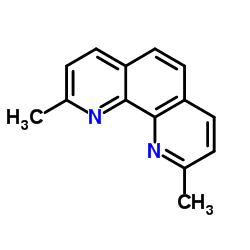
484-11-7 |
| 文献:De, Kavita; Legros, Julien; Crousse, Benoit; Chandrasekaran, Srinivasan; Bonnet-Delpon, Daniele Organic and Biomolecular Chemistry, 2011 , vol. 9, # 2 p. 347 - 350 |
|
~59% 
484-11-7 |
| 文献:Chelucci, Giorgio; Addis, Daniele; Baldino, Salvatore Tetrahedron Letters, 2007 , vol. 48, # 19 p. 3359 - 3362 |
|
~% 
484-11-7 |
| 文献:Case Journal of the American Chemical Society, 1948 , vol. 70, p. 3994 |
|
~% 
484-11-7 |
| 文献:Pijper; Van der Goot; Timmerman; Nauta Th. European Journal of Medicinal Chemistry, 1984 , vol. 19, # 5 p. 399 - 404 |
|
~% 
484-11-7 |
| 文献:Arnaud-Neu, Francoise; Marques, Elizabete; Schwing-Weill, Marie-Jose; Dietrich-Buchecker, Christiane; Sauvage, Jean-Pierre; Weiss, Jean New Journal of Chemistry, 1988 , vol. 12, p. 15 - 20 |
| 上游产品 7 | |
|---|---|
| 下游产品 10 | |

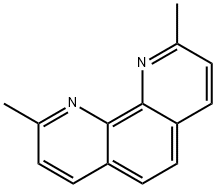
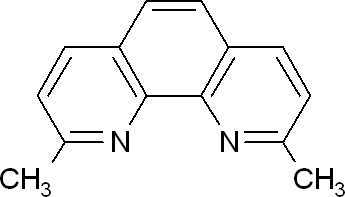

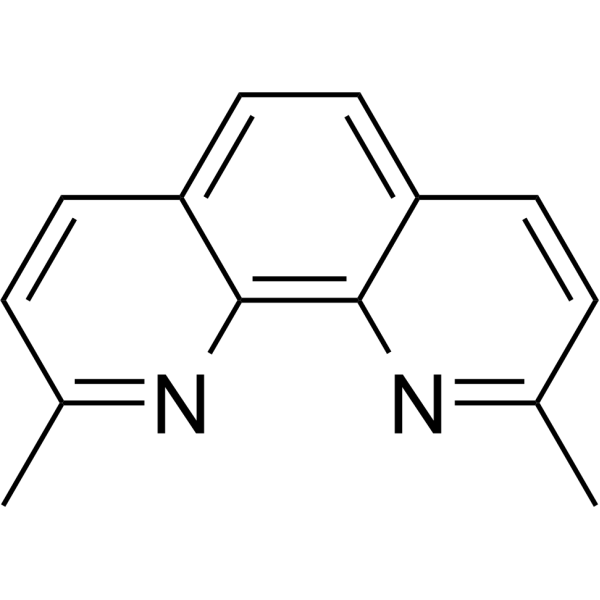

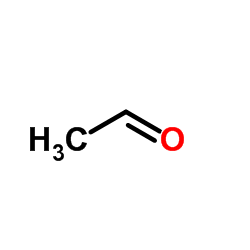
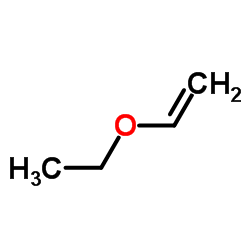
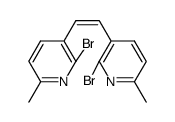
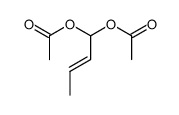
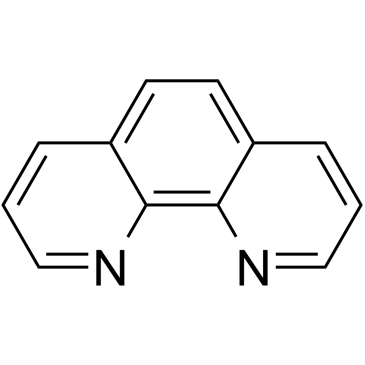


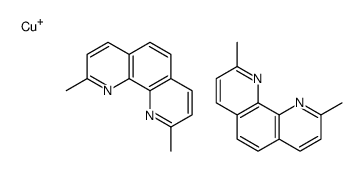

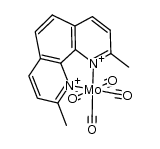
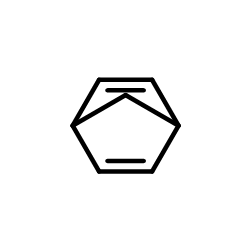

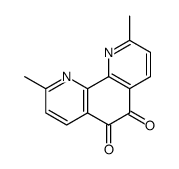
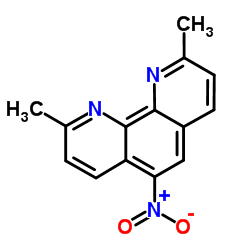
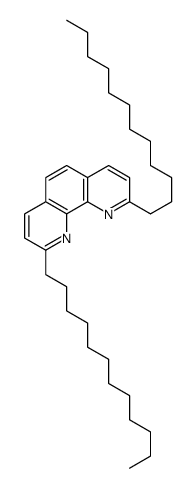
![2-methyl-9-[2-(9-methyl-1,10-phenanthrolin-2-yl)ethyl]-1,10-phenanthroline结构式](/20230522/120096-06-2.png)
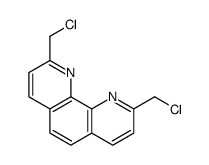
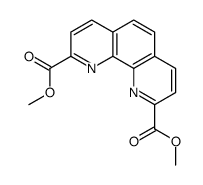
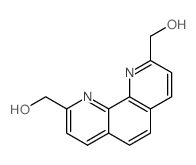





 浙公网安备 33010802013016号
浙公网安备 33010802013016号